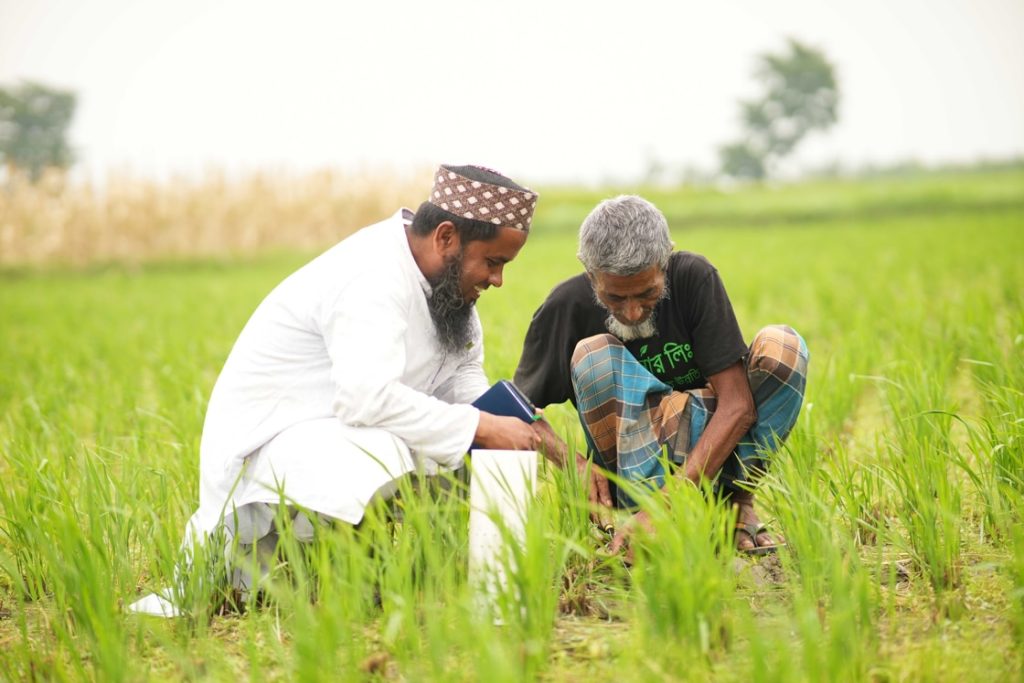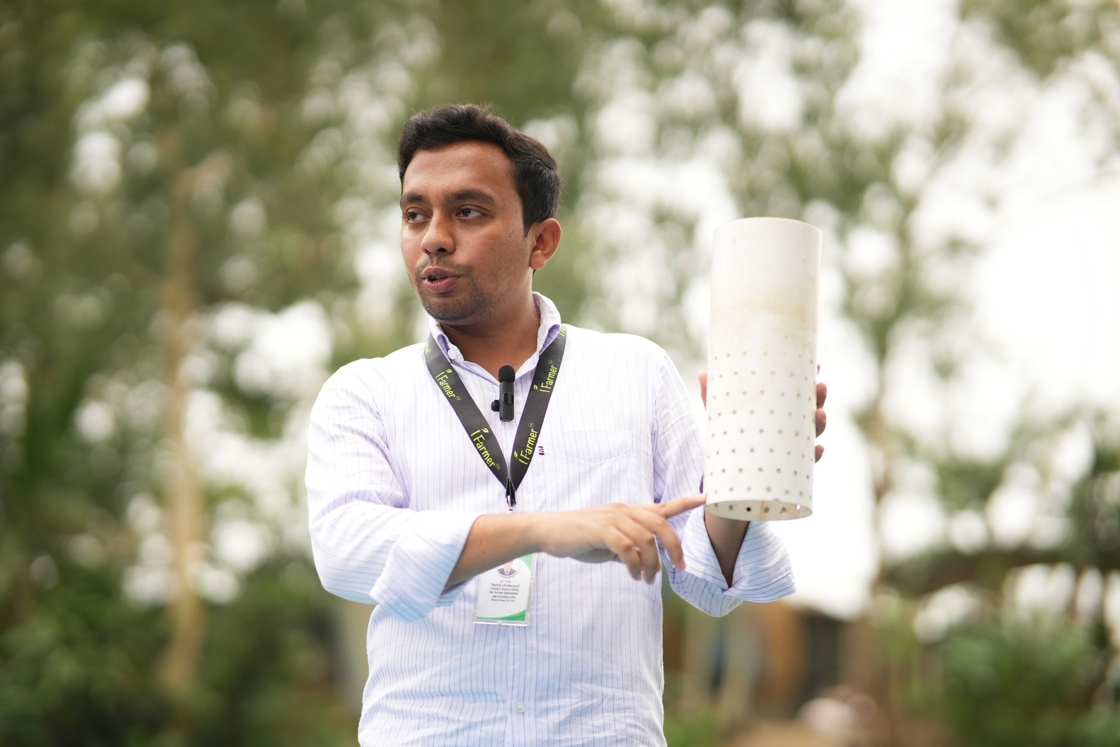Tags
How AWD Could Transform Bangladesh’s Rice Production: iFarmer’s Latest Research Shows Promising Results.
By Future Startup Team.

The challenge of sustainable rice production in Bangladesh has become increasingly pressing as water scarcity and climate change threaten traditional farming methods. Rice production faces added challenges from its water-intensive nature—producing just one kilogram of rice through traditional flooding methods demands an astronomical 4,000 liters of water. In a country where rice is the primary staple food source and rice cultivation dominates the agricultural landscape, this intensive water usage places unprecedented strain on already stressed water resources.
The challenges don’t end there. Climate change has introduced new complexities to rice farming with erratic rainfall patterns and prolonged droughts that disrupt traditional growing seasons. This seasonal unpredictability and the sector’s excessive water consumption accelerate environmental degradation through severe groundwater depletion. Moreover, the practice of continuous flooding in rice paddies contributes to methane emissions, further exacerbating climate change impacts. These interlinked challenges demand innovative solutions that can balance the dual imperatives of water conservation and maintaining vital rice yields.
Enter Alternate Wetting and Drying (AWD), a breakthrough agricultural technique that’s showing remarkable promise in addressing these challenges.
For the uninitiated, Alternate Wetting and Drying (AWD) represents a paradigm shift in rice cultivation methodology. Unlike traditional approaches that keep rice fields continuously flooded, AWD introduces a more nuanced irrigation pattern where fields alternate between wet and dry conditions.
The technique employs a simple yet effective tool: a perforated pipe inserted into the soil that allows farmers to monitor water levels below the soil surface. When the water level drops 15-20 centimeters below the surface, farmers reintroduce irrigation water until it reaches a height of about 3-5 centimeters above the soil. This cycle continues throughout the growing season, with some critical periods (like flowering) maintained under shallow flooding to ensure optimal plant growth.
The beauty of AWD lies in its simplicity. It requires minimal technological investment while delivering significant benefits in water conservation and cost reduction.
Why AWD Matters Now More Than Ever
Bangladesh’s agriculture sector faces multiple challenges: increasing water scarcity, rising production costs, and the environmental impact of traditional rice farming methods. Water scarcity is becoming a growing challenge for Bangladesh. According to some sources, “over-extraction of groundwater has been leading to a sharp decline of the water table –around 3m/year for Dhaka city, and 50-100 cm/year in Bangladesh on average.”
AWD could be a practical solution that could transform how we grow rice. The method allows farmers to optimize water usage while maintaining or even improving yields, a win-win solution for both farmers and the environment. More importantly, the method is highly cost-effective compared to other alternative methods.
iFarmer’s Research on AWD
Bangladesh’s leading agri-tech startup iFarmer recently conducted comprehensive field trials to validate AWD’s effectiveness in Bangladesh’s context. The research, carried out from February to May 2024, covered four key districts: Bogura, Thakurgaon, Lalmonirhat, and Sirajganj, involving 40 farmers who implemented AWD techniques alongside traditional methods, providing direct comparative data.
iFarmer’s applied a practical and farmer-centric methodology:
- Each farmer managed two plots: one using AWD and another using traditional irrigation
- Weekly monitoring ensured accurate data collection
- Focus group discussions and demonstrations provided hands-on learning opportunities
- Comprehensive data collection covered irrigation frequency, water usage, costs, and yields
The Results Are In: AWD Works
- Reduction in Irrigation Frequency: AWD significantly reduced the number of irrigation events, particularly in sandy soils. For instance, in Sirajganj, one of the regions where iFarmer conducted the trial, the frequency decreased from 17 cycles (traditional) to 12 cycles (AWD). This reduction not only conserved water but also reduced labor and energy costs associated with irrigation.
- Water and Cost Savings: Across all regions, AWD achieved substantial water savings, ranging from 100,614 liters to 223,367 liters per irrigation cycle per bigha. The associated cost savings varied by region, from 159 BDT in Bogura to 1,310 BDT in Sirajganj, with an average saving of 22.7% compared to traditional methods.
- Economic Feasibility: The study demonstrated that AWD is not only environmentally beneficial but also economically viable. In areas with higher initial irrigation costs, such as Sirajganj, the cost savings were particularly significant, making AWD an attractive option for resource-strapped farmers.
- Stable or Improved Yields: One of the most remarkable findings was that rice yields under AWD remained consistent with or slightly improved compared to traditional methods. In Lalmonirhat, for example, farmers reported yields of 22.4 maunds per bigha under AWD, compared to 21-22 maunds using traditional methods. This proves that water conservation does not come at the expense of productivity.
- Environmental Benefits: By reducing the duration of flooded conditions, AWD minimizes methane emissions, a potent greenhouse gas. This makes AWD not only a water-saving technique but also a climate-smart agricultural practice.

Why Bangladesh Should Scale Up AWD Implementation
iFarmer’s research points to several compelling reasons for broader AWD adoption:
Economic Viability: AWD isn’t just environmentally friendly, it makes financial sense. The significant cost savings demonstrated in the research can improve farmer profitability, particularly in regions with higher irrigation costs. This economic benefit could drive organic adoption among farmers.
Food Security: With maintained or improved yields, AWD addresses the critical balance between conservation and production. This is essential for Bangladesh’s food security goals, especially considering the growing population and increasing pressure on agricultural resources.
Environmental Sustainability: The reduced water usage and lower methane emissions align perfectly with Bangladesh’s climate action goals. AWD represents a practical step toward more sustainable agriculture without compromising productivity.
Scaling AWD Across Bangladesh
The success of iFarmer’s AWD project demonstrates its potential to transform rice cultivation in Bangladesh by reducing water usage, lowering costs, and maintaining yields while addressing water scarcity and food security challenges.
To maximize AWD’s impact, a comprehensive policy approach is crucial. This includes implementing targeted subsidies for AWD equipment, developing structured training programs, and creating incentives for early adopters to accelerate sustainable farming transitions.
Infrastructure development involving the modernization of irrigation systems and establishing demonstration farms to showcase the technique’s effectiveness across different regions is also critical for scaling AWD.
Effective knowledge sharing is essential for broader adoption. This requires creating awareness about AWD’s benefits through diverse channels and disseminating success stories and practical experiences from early adopters.
Finally, continued research and development are vital, focusing on long-term impact studies across different soil types and climatic conditions, adapting the technique to regional contexts, and refining implementation methods based on farmer feedback and scientific observations.
Looking Ahead
iFarmer’s research on AWD presents a clear opportunity for Bangladesh’s agricultural sector. The data shows that AWD isn’t just theoretically promising, it’s practically viable and economically beneficial. As water scarcity becomes more pressing and the need for sustainable agriculture grows, AWD represents a proven solution that could transform rice cultivation in Bangladesh and trigger the groundwork of climate-smart and ideal agriculture practices.
The success of this research should catalyze broader implementation. With proper support from policymakers, agricultural extension services, and technology providers, AWD could become the standard practice in rice cultivation, leading to more sustainable and profitable farming across Bangladesh.
The question now isn’t whether to adopt AWD, but how quickly and effectively we can scale it across the country. iFarmer’s research has shown the way, it’s time for stakeholders across the agricultural sector to take action and transform Bangladesh’s rice production for a more sustainable future.
Published Date: January 26, 2025






